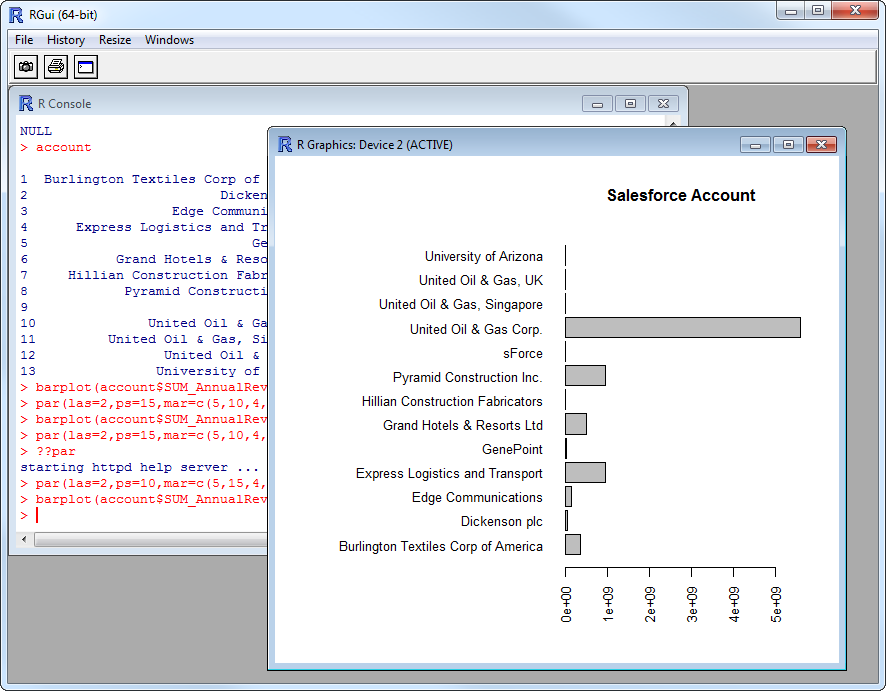Discover how a bimodal integration strategy can address the major data management challenges facing your organization today.
Get the Report →Analyze Gmail Data in R
Use standard R functions and the development environment of your choice to analyze Gmail data with the CData JDBC Driver for Gmail.
Access Gmail data with pure R script and standard SQL on any machine where R and Java can be installed. You can use the CData JDBC Driver for Gmail and the RJDBC package to work with remote Gmail data in R. By using the CData Driver, you are leveraging a driver written for industry-proven standards to access your data in the popular, open-source R language. This article shows how to use the driver to execute SQL queries to Gmail and visualize Gmail data by calling standard R functions.
Install R
You can match the driver's performance gains from multi-threading and managed code by running the multithreaded Microsoft R Open or by running open R linked with the BLAS/LAPACK libraries. This article uses Microsoft R Open 3.2.3, which is preconfigured to install packages from the Jan. 1, 2016 snapshot of the CRAN repository. This snapshot ensures reproducibility.
Load the RJDBC Package
To use the driver, download the RJDBC package. After installing the RJDBC package, the following line loads the package:
library(RJDBC)
Connect to Gmail as a JDBC Data Source
You will need the following information to connect to Gmail as a JDBC data source:
- Driver Class: Set this to cdata.jdbc.gmail.GmailDriver
- Classpath: Set this to the location of the driver JAR. By default this is the lib subfolder of the installation folder.
The DBI functions, such as dbConnect and dbSendQuery, provide a unified interface for writing data access code in R. Use the following line to initialize a DBI driver that can make JDBC requests to the CData JDBC Driver for Gmail:
driver <- JDBC(driverClass = "cdata.jdbc.gmail.GmailDriver", classPath = "MyInstallationDir\lib\cdata.jdbc.gmail.jar", identifier.quote = "'")
You can now use DBI functions to connect to Gmail and execute SQL queries. Initialize the JDBC connection with the dbConnect function.
There are two ways to authenticate to Gmail. Before selecting one, first ensure that you have enabled IMAP access in your Gmail account settings. See the "Connecting to Gmail" section under "Getting Started" in the installed documentation for a guide.
The User and Password properties, under the Authentication section, can be set to valid Gmail user credentials.
Alternatively, instead of providing the Password, you can use the OAuth authentication standard. To access Google APIs on behalf on individual users, you can use the embedded credentials or you can register your own OAuth app.
OAuth also enables you to use a service account to connect on behalf of users in a Google Apps domain. To authenticate with a service account, you will need to register an application to obtain the OAuth JWT values.
In addition to the OAuth values, you will need to provide the User. See the "Getting Started" chapter in the help documentation for a guide to using OAuth.
Built-in Connection String Designer
For assistance in constructing the JDBC URL, use the connection string designer built into the Gmail JDBC Driver. Either double-click the JAR file or execute the jar file from the command-line.
java -jar cdata.jdbc.gmail.jar
Fill in the connection properties and copy the connection string to the clipboard.

Below is a sample dbConnect call, including a typical JDBC connection string:
conn <- dbConnect(driver,"jdbc:gmail:User=username;Password=password;")
Schema Discovery
The driver models Gmail APIs as relational tables, views, and stored procedures. Use the following line to retrieve the list of tables:
dbListTables(conn)
Execute SQL Queries
You can use the dbGetQuery function to execute any SQL query supported by the Gmail API:
inbox <- dbGetQuery(conn,"SELECT Subject, Size FROM Inbox")
You can view the results in a data viewer window with the following command:
View(inbox)
Plot Gmail Data
You can now analyze Gmail data with any of the data visualization packages available in the CRAN repository. You can create simple bar plots with the built-in bar plot function:
par(las=2,ps=10,mar=c(5,15,4,2))
barplot(inbox$Size, main="Gmail Inbox", names.arg = inbox$Subject, horiz=TRUE)







